
How to Use Step-down 12 To 5V 3A LM2596 : Examples, Pinouts, and Specs
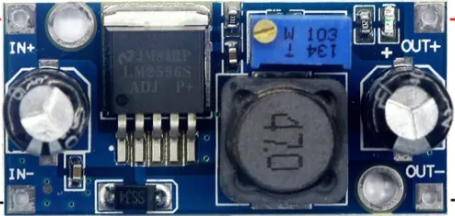
 Design with Step-down 12 To 5V 3A LM2596 in Cirkit Designer
Design with Step-down 12 To 5V 3A LM2596 in Cirkit DesignerIntroduction
The Step-down 12 To 5V 3A LM2596 is a DC-DC buck converter designed to efficiently step down a 12V input voltage to a stable 5V output. It is capable of delivering a maximum output current of 3A, making it ideal for powering devices that require a lower voltage, such as microcontrollers, sensors, and USB-powered devices. This module is widely used in embedded systems, robotics, and portable electronics due to its compact size, high efficiency, and ease of use.
Explore Projects Built with Step-down 12 To 5V 3A LM2596
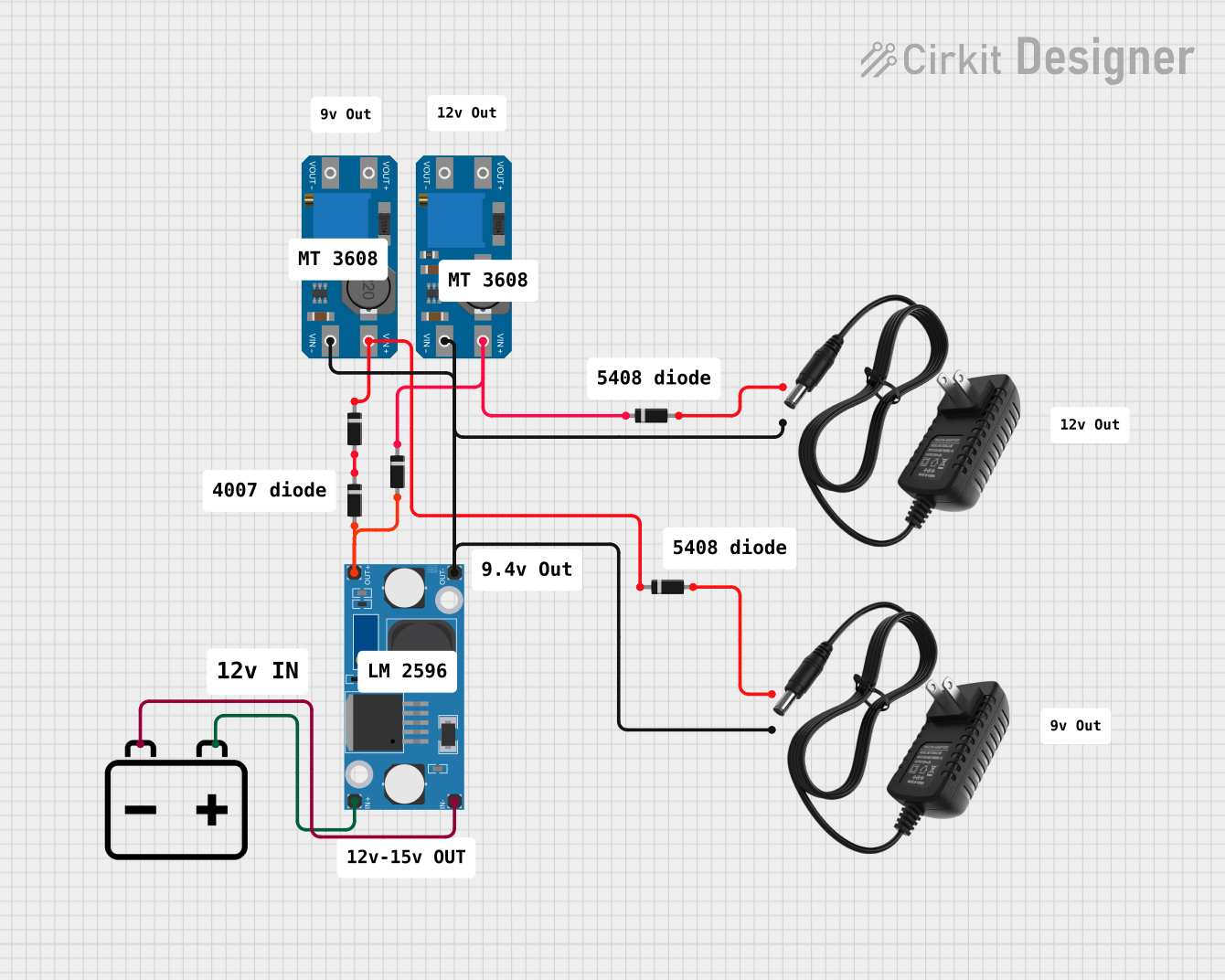
 Open Project in Cirkit Designer
Open Project in Cirkit Designer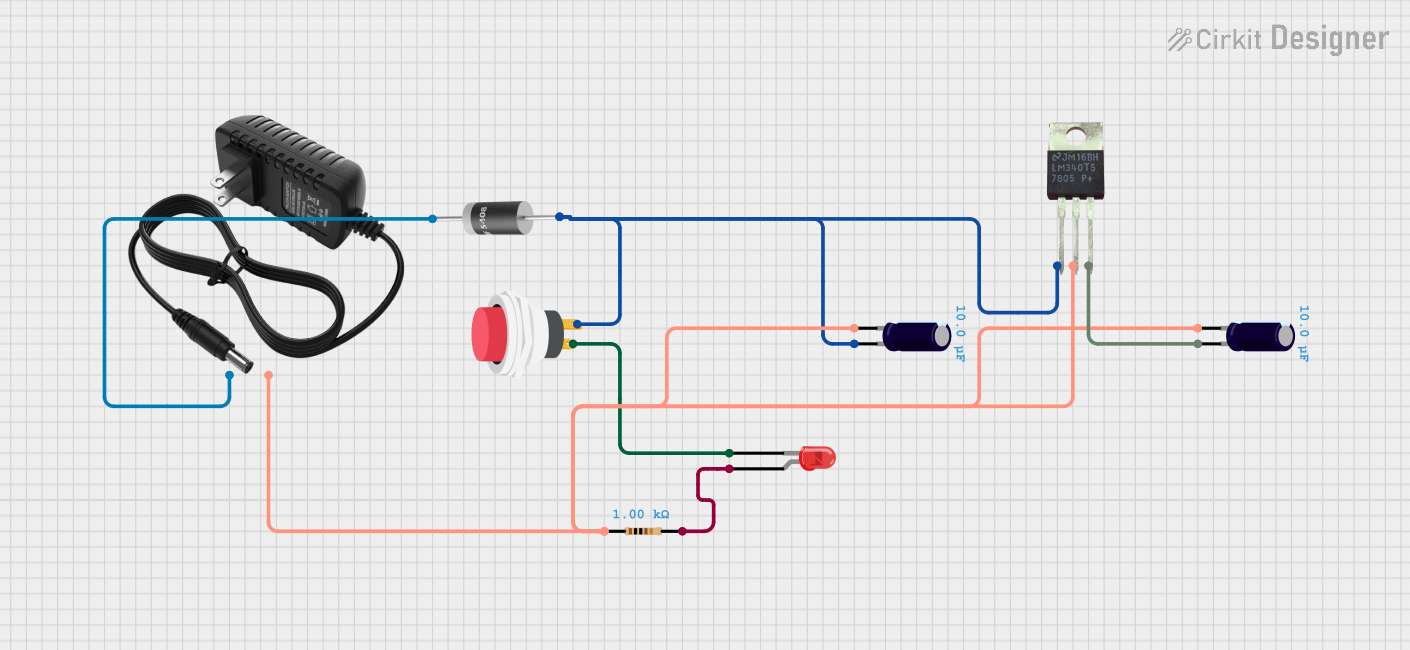
 Open Project in Cirkit Designer
Open Project in Cirkit Designer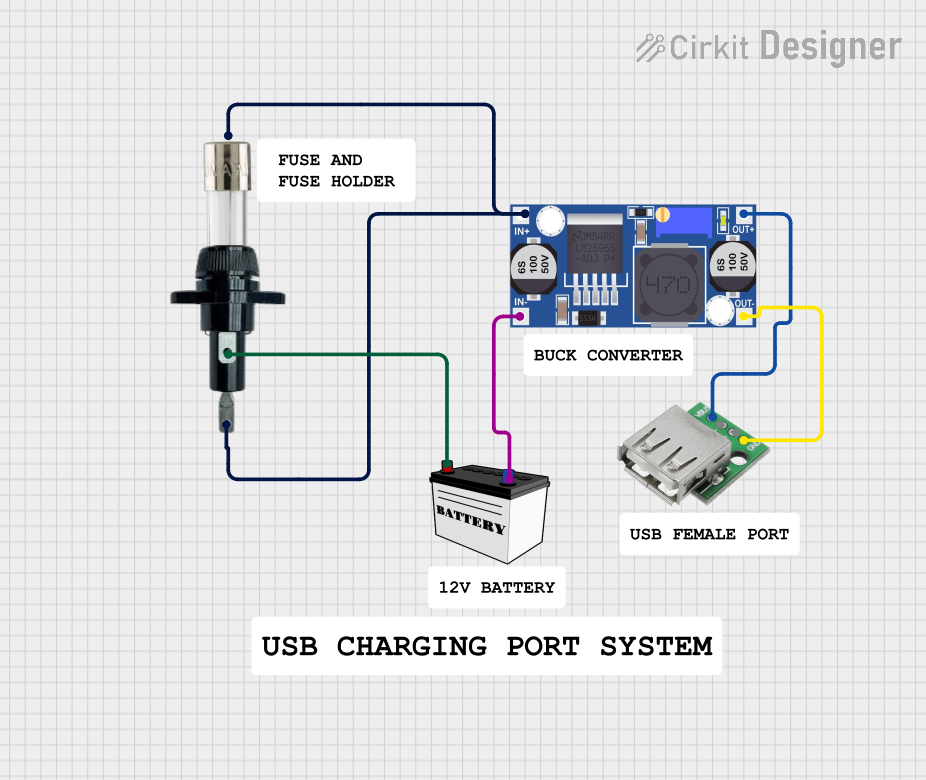
 Open Project in Cirkit Designer
Open Project in Cirkit Designer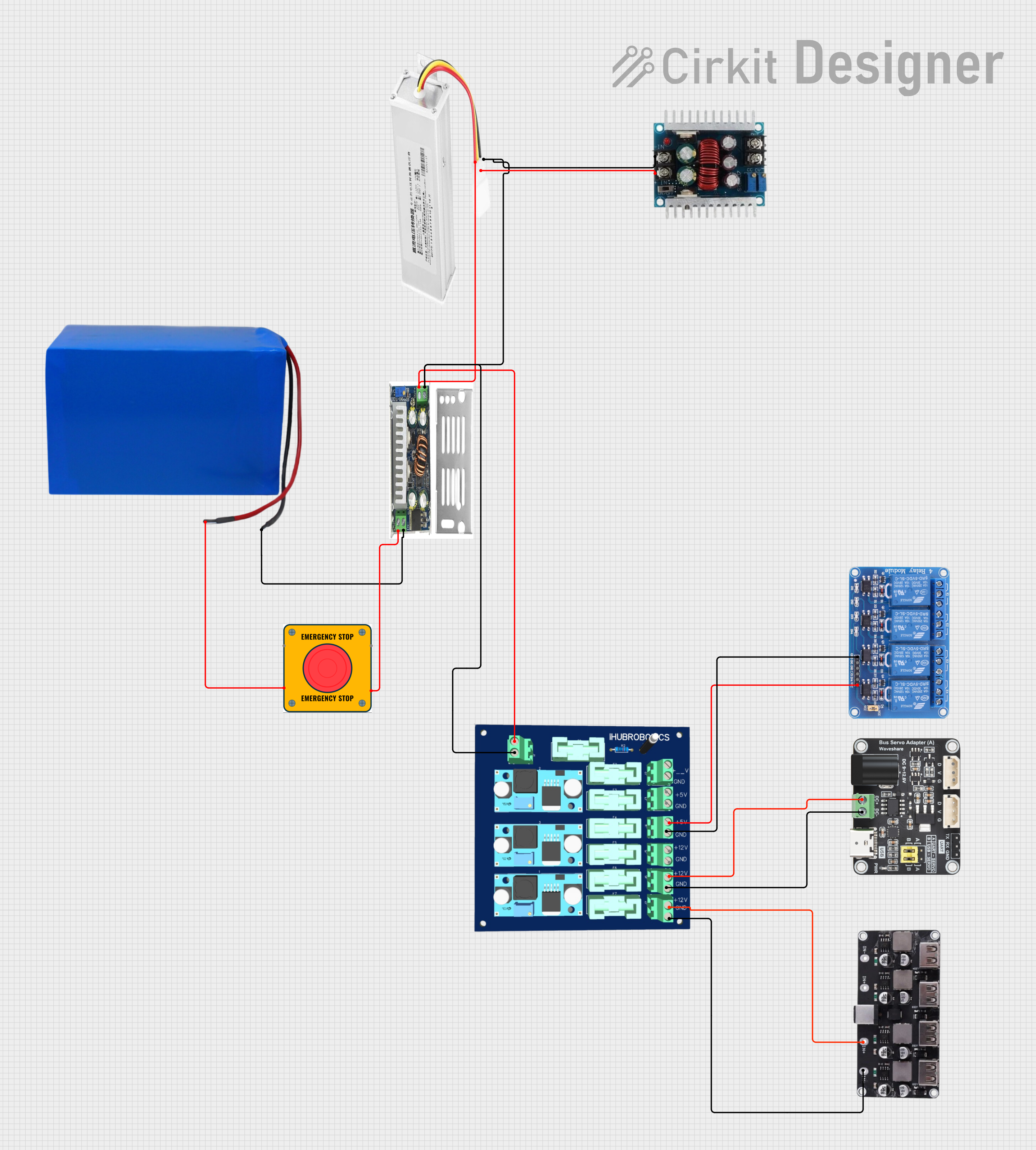
 Open Project in Cirkit Designer
Open Project in Cirkit DesignerExplore Projects Built with Step-down 12 To 5V 3A LM2596

 Open Project in Cirkit Designer
Open Project in Cirkit Designer
 Open Project in Cirkit Designer
Open Project in Cirkit Designer
 Open Project in Cirkit Designer
Open Project in Cirkit Designer
 Open Project in Cirkit Designer
Open Project in Cirkit DesignerCommon Applications
- Powering microcontrollers like Arduino, Raspberry Pi, and ESP32
- USB device power supplies
- Battery-powered systems
- Robotics and automation projects
- LED lighting systems
Technical Specifications
The following table outlines the key technical details of the LM2596 step-down module:
| Parameter | Value |
|---|---|
| Input Voltage Range | 7V to 40V |
| Output Voltage | Adjustable (default: 5V) |
| Maximum Output Current | 3A |
| Efficiency | Up to 92% |
| Switching Frequency | 150 kHz |
| Output Ripple | < 30 mV |
| Operating Temperature | -40°C to +85°C |
| Dimensions | ~43mm x 21mm x 14mm |
Pin Configuration and Descriptions
The LM2596 module typically has the following pin configuration:
| Pin Name | Description |
|---|---|
| VIN | Input voltage pin (connect to 12V or other input voltage within the range) |
| GND | Ground pin (common ground for input and output) |
| VOUT | Output voltage pin (provides the stepped-down voltage, e.g., 5V) |
Usage Instructions
How to Use the LM2596 in a Circuit
Connect the Input Voltage:
- Connect the VIN pin to a DC power source (e.g., 12V battery or adapter).
- Ensure the input voltage is within the module's range (7V to 40V).
Connect the Output Load:
- Connect the VOUT pin to the device or circuit requiring 5V.
- Ensure the load does not exceed the maximum output current of 3A.
Adjust the Output Voltage (if needed):
- Use the onboard potentiometer to adjust the output voltage.
- Turn the potentiometer clockwise to increase the voltage and counterclockwise to decrease it.
- Use a multimeter to measure the output voltage while adjusting.
Power On:
- Once all connections are secure, power on the input source.
- Verify the output voltage and ensure the module is operating as expected.
Important Considerations and Best Practices
- Heat Dissipation: At high currents, the module may generate heat. Use a heatsink or ensure proper ventilation to prevent overheating.
- Input Voltage: Always ensure the input voltage is higher than the desired output voltage (minimum 2V difference).
- Polarity: Double-check the polarity of the input and output connections to avoid damage.
- Load Current: Do not exceed the maximum output current of 3A to prevent damage to the module.
Example: Using LM2596 with Arduino UNO
The LM2596 can be used to power an Arduino UNO by stepping down a 12V input to 5V. Below is an example circuit and code:
Circuit Connections
- Connect the VIN pin of the LM2596 to a 12V DC power source.
- Connect the GND pin of the LM2596 to the ground of the power source and Arduino.
- Connect the VOUT pin of the LM2596 to the 5V pin of the Arduino UNO.
Example Code
// Example code to blink an LED using Arduino UNO powered by LM2596
// Ensure the LM2596 is providing a stable 5V output to the Arduino
const int ledPin = 13; // Built-in LED pin on Arduino UNO
void setup() {
pinMode(ledPin, OUTPUT); // Set the LED pin as an output
}
void loop() {
digitalWrite(ledPin, HIGH); // Turn the LED on
delay(1000); // Wait for 1 second
digitalWrite(ledPin, LOW); // Turn the LED off
delay(1000); // Wait for 1 second
}
Troubleshooting and FAQs
Common Issues and Solutions
No Output Voltage:
- Cause: Incorrect wiring or loose connections.
- Solution: Verify all connections and ensure the input voltage is within the specified range.
Output Voltage is Incorrect:
- Cause: Potentiometer not adjusted correctly.
- Solution: Use a multimeter to measure the output voltage and adjust the potentiometer as needed.
Module Overheating:
- Cause: Excessive load current or poor ventilation.
- Solution: Reduce the load current or add a heatsink to the module.
High Output Ripple:
- Cause: Insufficient input or output capacitors.
- Solution: Add additional capacitors (e.g., 100µF electrolytic) to the input and output terminals.
FAQs
Q: Can I use the LM2596 to power a Raspberry Pi?
A: Yes, but ensure the output voltage is set to 5V and the current requirement of the Raspberry Pi (including peripherals) does not exceed 3A.
Q: Is the output voltage adjustable?
A: Yes, the output voltage can be adjusted using the onboard potentiometer.
Q: Can I use the LM2596 with a 24V input?
A: Yes, as long as the input voltage is within the range of 7V to 40V and the output voltage is set appropriately.
Q: Does the module have reverse polarity protection?
A: No, the LM2596 module does not have built-in reverse polarity protection. Always double-check the polarity of your connections.